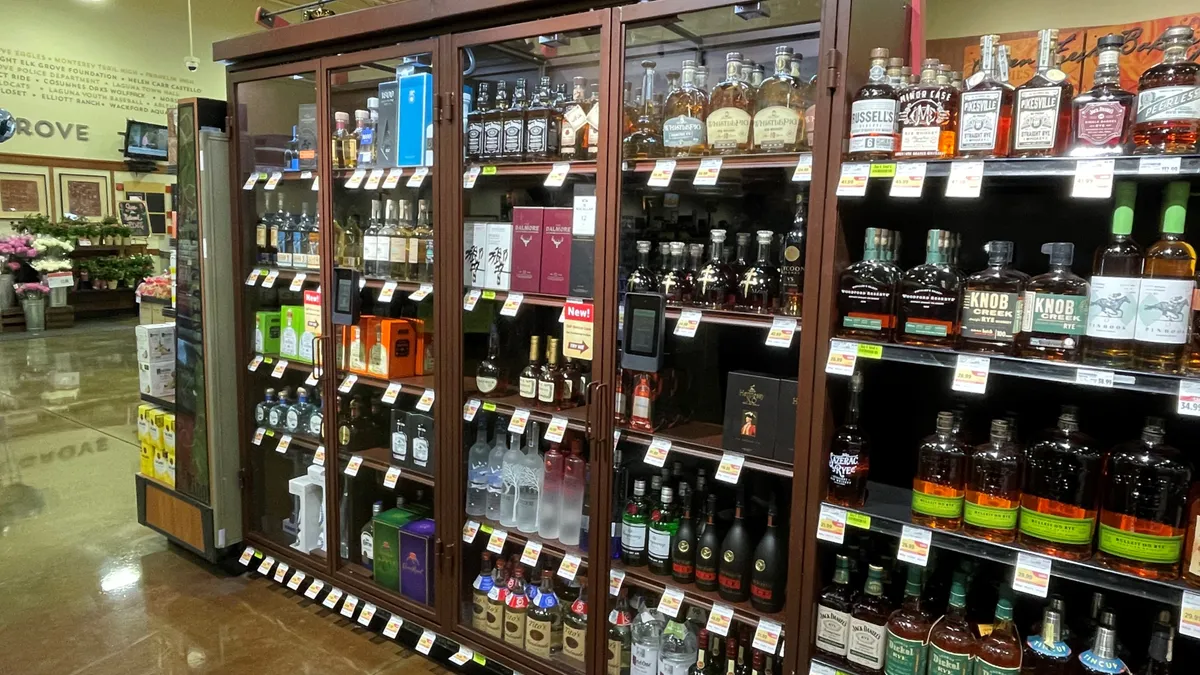Shrink due to theft and organized retail crime (ORC) worsened during the height of the COVID-19 pandemic and is continuing to make headlines this year.
A California Whole Foods closed recently due to increasing safety concerns while Target said it expects to take a multimillion dollar profit hit because of retail theft.
Technology aimed at deterring theft and protecting displayed products is becoming increasingly common, and while it may help curb shoplifting, it can also leave shoppers frustrated. “A grocery run shouldn’t feel like visiting a prison,” a Los Angeles Times opinion piece stated earlier this month referring to shopping alongside locked-up display cases.
Self-checkout kiosks are also sporting technology aimed at preventing theft. Large camera systems at a Harris Teeter in Maryland installed above self-checkout stations remind shoppers — and potential shoplifters — that they are being watched. The system, according to the grocer’s posted signs, also alerts customers if they neglect to scan an item and gives them the chance to correct the error before they continue processing their order. If a product is not scanned a second time, an employee is alerted.
Beyond technology though, grocery chains have expanded their staff to include asset protection specialists, specifically to tackle the growing problem of ORC, with some grocers establishing full ORC units. These roles and teams are effective, leading to more apprehensions, prosecutions and civil demands of ORC crime, according to a recent report by the National Retail Federation.
Here’s a roundup looking at how shrink, theft and ORC have impacted grocers so far this year, and what top retailers are doing about it.













